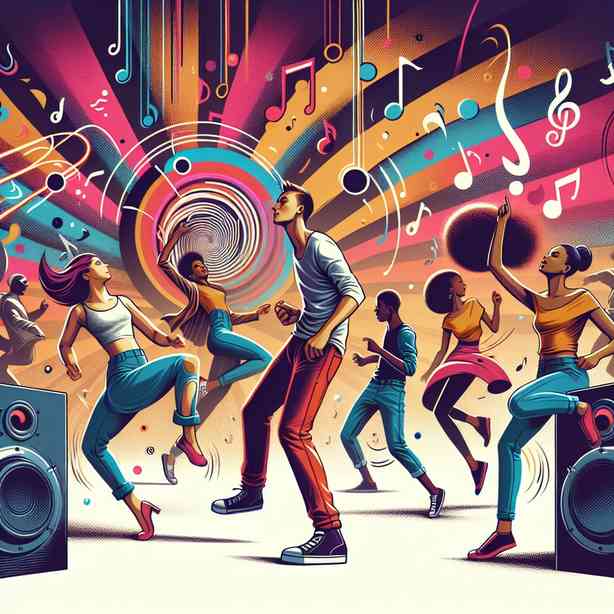
Music has a unique ability to move not only our emotions but also our bodies. When you hear a certain beat, it’s almost impossible to resist the urge to tap your feet, sway your hips, or even get up and dance. This phenomenon can be attributed to several elements embedded in the music itself, and understanding these elements can enrich our appreciation for those tracks that truly make us want to move.
At the core of music that motivates movement is rhythm. Rhythm creates a pulse that we instinctively respond to; it sets the pace and establishes the flow of the music. Generally, music with a strong, steady beat encourages physical movements. Genres like hip-hop, dance, and electronic music thrive on repetitive beats that captivate listeners, urging them to join in and participate. The tempo, usually measured in beats per minute (BPM), can significantly influence how we respond to music. Upbeat songs with a BPM ranging from 120 to 140 tend to be particularly effective at inspiring movement, perfect for energetic dance routines or workouts.
Another impactful element is melody. A catchy melody is not only enjoyable to listen to but can also ignite memories and emotions, prompting movement. Songs that possess an uplifting or energizing melody often resonate deeply with listeners, making them feel invincible and ready to take on the world. Take, for instance, the quintessential summer anthem or party banger; these songs often possess melodies that are instantly recognizable and enjoyable, making you want to sing along while dancing.
Furthermore, the lyrics of a song can also inspire movement. Empowering themes of resilience and freedom or even simple party-related phrases can evoke enthusiasm and excitement. Many artists consciously write lyrics that empower and uplift, knowing it will incite listeners to move. When people feel a personal connection to the lyrics, whether they relate to the message or simply enjoy the vibes, they are more likely to respond physically to the music.
In addition to rhythm, melody, and lyrics, the arrangement and production of a track can also play significant roles in making music enjoyable for movement. Elements such as the use of basslines, instrumentation, and dynamics can dramatically affect our desire to dance. A prominent bassline can stimulate physical responses, and heavy drops in electronic music can evoke feelings of exhilaration that manifest as energetic movements. The layering of instruments and vocal harmonies can also create a fuller sound that envelops the listener, encouraging them to move in sync with the music’s journey.
Cultural influences should also be considered when discussing music that inspires movement. Different cultures have their own musical styles that inherently encourage physical expression. For instance, genres such as salsa, samba, or bhangra are built on the premise of dance. The traditional dances associated with these musical styles often embody movements that are reflective of cultural heritage, showcasing how music can spark an innate desire to perform.
Moreover, the social aspect of music cannot be disregarded. Group dances, whether in clubs or cultural gatherings, create a communal experience that enhances the desire to move. The energy emitted from a crowd dancing together is electric, and the visual stimulation of others in motion can inspire even the most reserved individuals to join in. Social settings also produce a feedback loop where individual motivation becomes amplified by the collective enthusiasm of others.
The psychological effects of music on movement are equally significant. Music can alter our mood, providing an emotional release that often translates into physical movement. Whether we are celebrating, expressing joy, or coping with sadness, the movement instigated by music can serve as a cathartic outlet. Exercise routines accompanied by energizing music can enhance performance, as the fun and engaging nature of the tracks keeps us motivated and pushing our limits.
Throughout history, music has been intertwined with movement, from tribal rituals to contemporary dance clubs. The evolution of music genres reflects changing cultural values and the impact of technology, influencing how music is created and consumed. Today, with streaming services and platforms like TikTok that emphasize short clips of dynamic movement, new genres are emerging and reshaping how we engage with music. Viral dances have made their way into everyday life, showcasing the symbiotic relationship between music and movement in modern culture.
In conclusion, the connection between music and movement is multifaceted, involving elements of rhythm, melody, lyrics, arrangement, cultural context, social interaction, and psychological impacts. As you explore the vast world of music, take a moment to reflect on what drives you to move. Let the sound waves wash over you and observe how they alter your emotional and physical state. By understanding these core elements, you can deepen your appreciation for those tracks that not only resonate with your soul but also make you feel the undeniable urge to dance. Whether you are honing your dance moves, engaging in workouts, or simply enjoying the rhythms during a casual gathering, let the music take control and inspire you to embrace the joy of movement.


